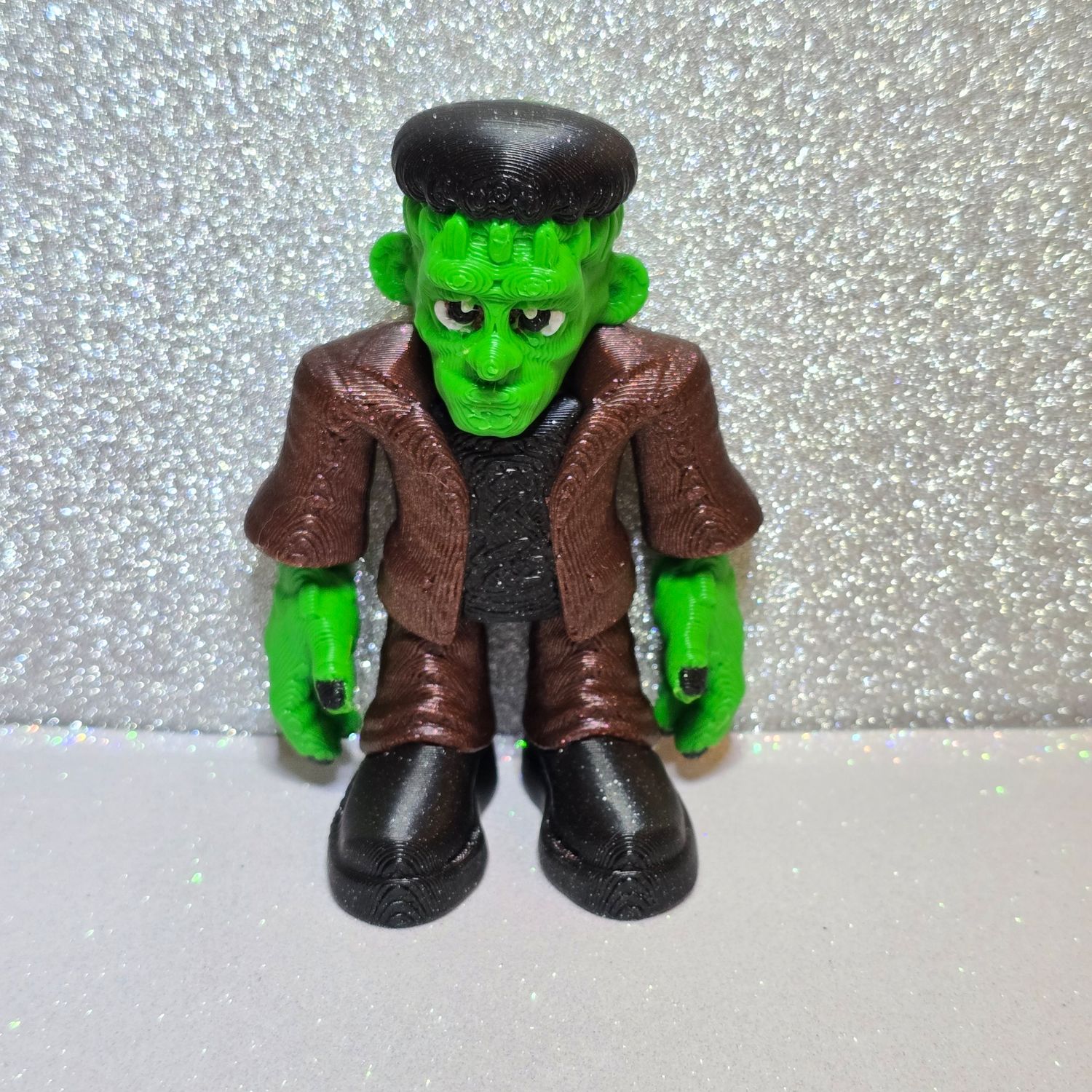Frankenstein Monster Fidget-3.5 inch
Frankenstein’s monster is one of the most famous figures in gothic literature. He first appears in Frankenstein; or, The Modern Prometheus (1818) by Mary Shelley. Here’s a breakdown:
Origins
The creature is created by Victor Frankenstein, a young scientist obsessed with conquering death.
He collects body parts from corpses and reanimates them using scientific methods (the book never specifies electricity, though later adaptations made it iconic).
Unlike the green, bolt-necked Hollywood version, Shelley’s monster is described as tall (over 8 feet), strong, and horrifying to look at, but also intelligent and sensitive.
Personality & Struggles
The monster starts innocent, curious, and yearning for love and connection.
He secretly observes humans to learn language, kindness, and culture.
However, everywhere he goes, people recoil in fear and violence because of his appearance.
His loneliness and rejection push him toward despair, then vengeance against Victor for creating him and abandoning him.
Themes
Responsibility in creation: Shelley highlights what happens when science advances without morality or compassion.
Isolation & humanity: The monster isn’t born evil; society’s rejection fuels his rage.
Playing God: Victor’s ambition to defy natural laws leads to tragic consequences for everyone he loves.
Pop Culture
Stage plays and films reshaped the image of the monster, especially Boris Karloff’s 1931 portrayal, which gave us the stitched face, bolts, and lumbering walk.
In popular culture, he’s often called “Frankenstein,” but technically that’s the name of the scientist—his creation is nameless in the novel.

